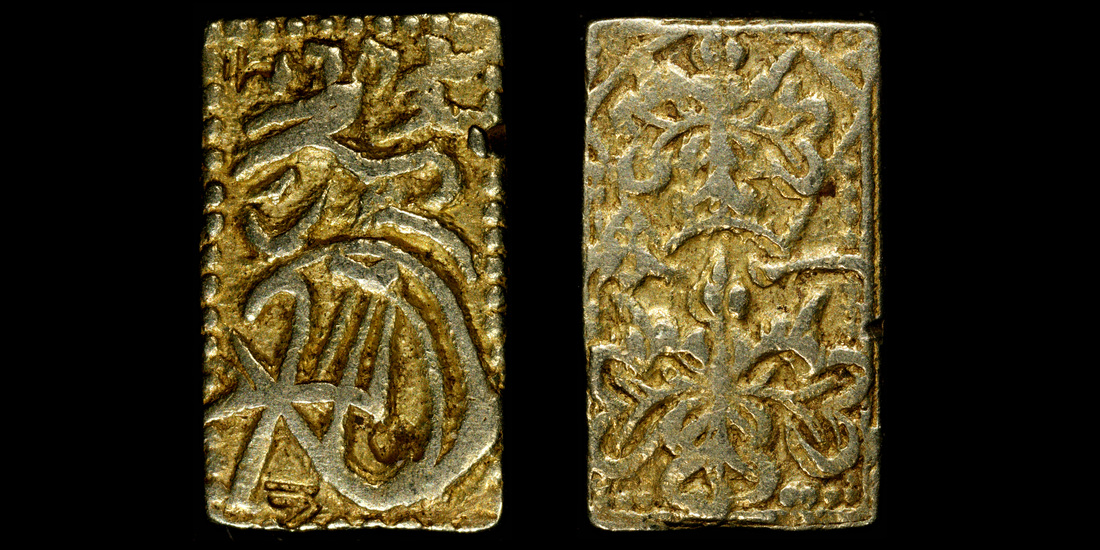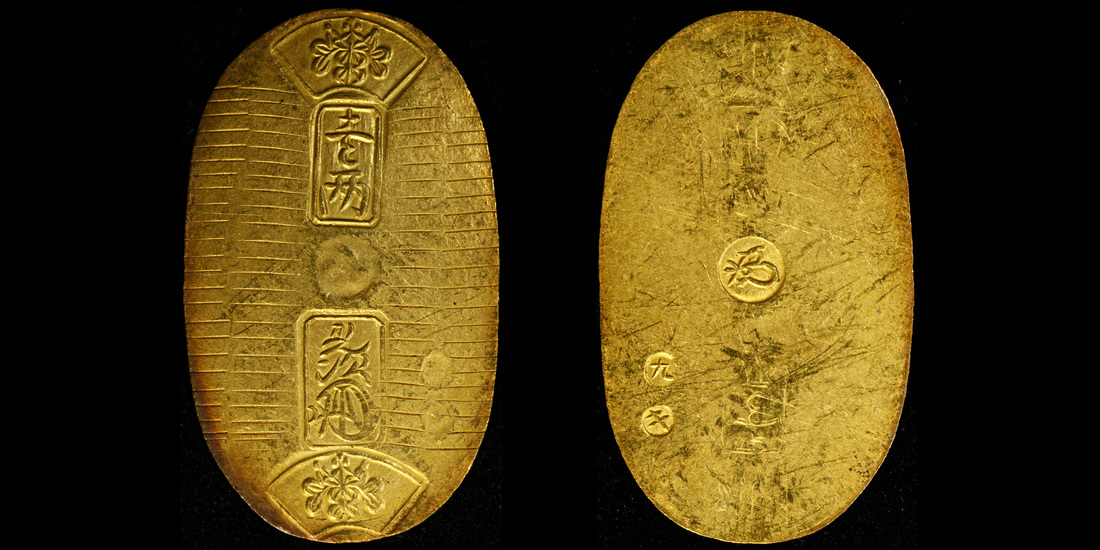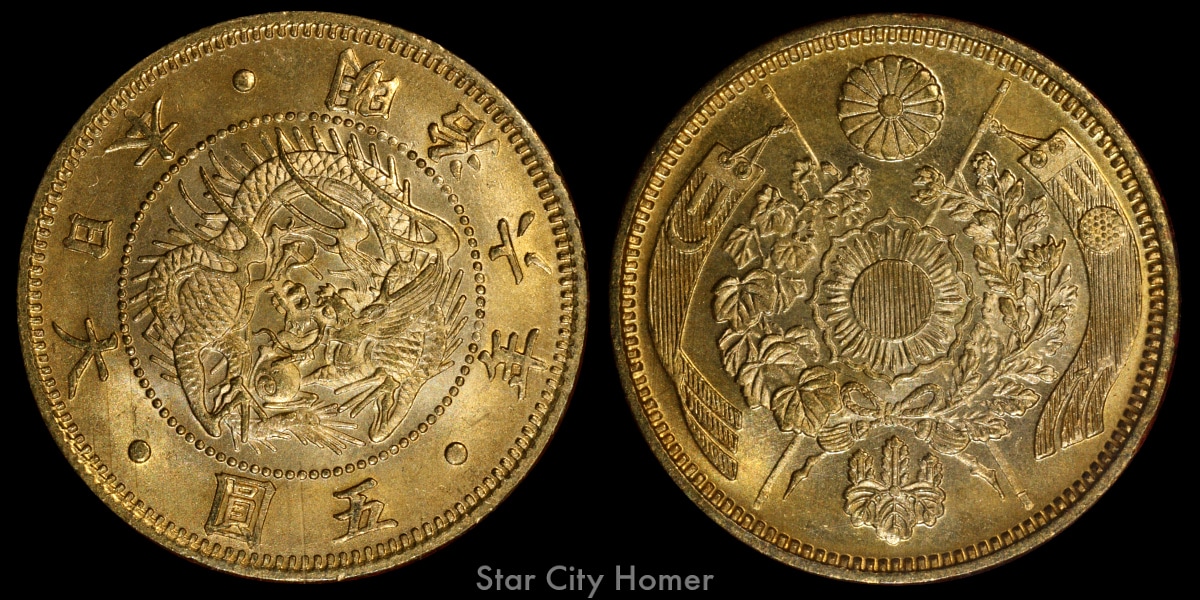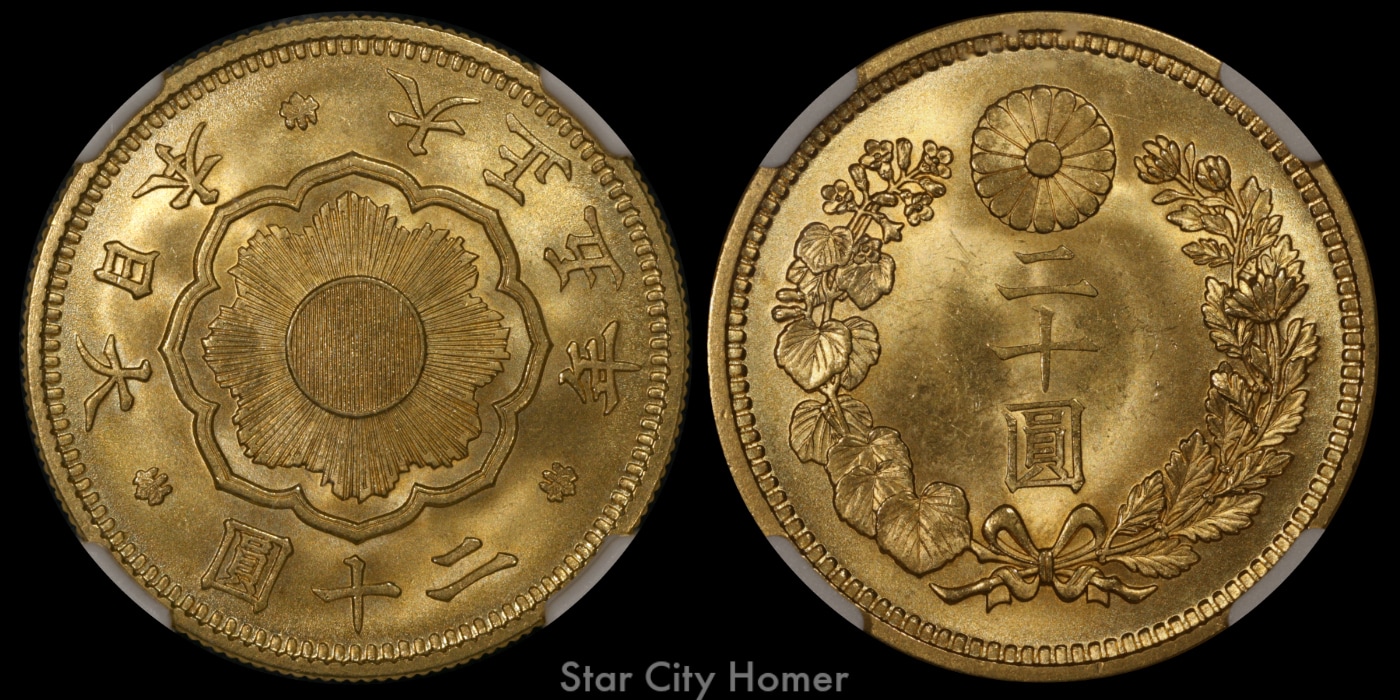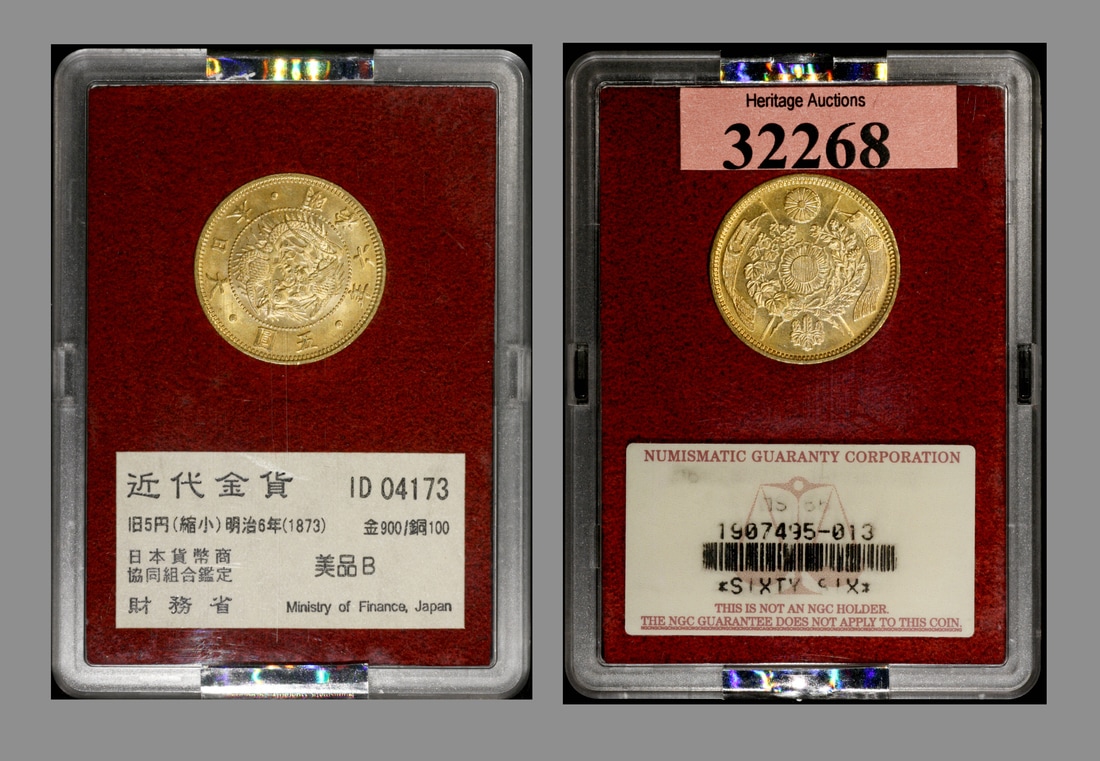Japan, GoldPre-Meiji, Modern, and Current
|
Pre-Meiji
The first examples represent a very limited selection of pre-Meiji gold coins spanning various eras. The JNDA catalog naming fashion is the one followed here.
Gold money can be found as regular catalog entries as early as the late 1500s (though these are extraordinarily cost prohibitive--and if ever a trip to the Osaka Mint is an option, then a wonderful display can be viewed in their museum). The size, shape , purity is highly variable between the issues as can be seen even from this small grouping.
Gold money can be found as regular catalog entries as early as the late 1500s (though these are extraordinarily cost prohibitive--and if ever a trip to the Osaka Mint is an option, then a wonderful display can be viewed in their museum). The size, shape , purity is highly variable between the issues as can be seen even from this small grouping.
|
Man-en Koban Kin, JNDA 09-23. 1860-1867. 3.30 grams, .574 gold/.426 silver.
The most reduced/debased version of the koban style, immediately preceding the Meiji restoration. Additional details on this particular coin are found on the pre-Meiji page. |
Modern
The modern gold coins reflected the standardization of the coinage instituted with the Meiji Restoration. As mentioned elsewhere on the site, the gold 1 yen coin was the basis from which all other denominations were derived. There are two basic styles, the 'old type' and the 'new type'.
The 'old type' styles shared a crossed banner reverse in 1, 2, 5, 10 and 20 yen denominations. All but the smallest featured a dragon obverse. Starting in M.5 (1872) the 1, 2 and 5 yen coins were modified into a 'reduced' design--smaller diameter, but same content. All but the 5 yen had very limited years of minting, and some of the years' mintages were quite limited.
The 'new type' yen coins started production in M.30 (1897) and consisted only of the 5,10 and 20 yen denominations. The 10 yen were limited to the Meiji reign. The 5 and 20 were also minted during the Taisho and Showa reigns. The designs were modified with a more stylized mirror and sunburst/the more typical foliage, chrysanthemum, and denomination. The last gold coin produced (until the commemorative issues began) was the 20 yen in S.7 (1932).
The 'old type' styles shared a crossed banner reverse in 1, 2, 5, 10 and 20 yen denominations. All but the smallest featured a dragon obverse. Starting in M.5 (1872) the 1, 2 and 5 yen coins were modified into a 'reduced' design--smaller diameter, but same content. All but the 5 yen had very limited years of minting, and some of the years' mintages were quite limited.
The 'new type' yen coins started production in M.30 (1897) and consisted only of the 5,10 and 20 yen denominations. The 10 yen were limited to the Meiji reign. The 5 and 20 were also minted during the Taisho and Showa reigns. The designs were modified with a more stylized mirror and sunburst/the more typical foliage, chrysanthemum, and denomination. The last gold coin produced (until the commemorative issues began) was the 20 yen in S.7 (1932).
Between 2005 and 2007 a hoard (~30,000) of gold coins was released from the vaults of the Japan Ministry of Finance. Surprising these were not taken in the aftermath WWII, but with the modern discovery the coins were released for collectors. Needless to say, the addition of 30K fresh coins--ranging from 1870-1930 had quite the impact on the market.
The coins were placed in special plastic cases and auctioned. The two major third party graders have assigned grades and registration numbers while leaving the coins within the Ministry cases (similar steps have been taken with other collectible coins in specific packaging such as the GSA dollars.
The coins were placed in special plastic cases and auctioned. The two major third party graders have assigned grades and registration numbers while leaving the coins within the Ministry cases (similar steps have been taken with other collectible coins in specific packaging such as the GSA dollars.
Current (commemoratives)
The first gold coin of the current coinage was a commemorative celebrating the 60th year of the Emperor on the throne. It was issued as a proof for two years in 1986 and 1987, and there is a mint state version as well. At one point there was the assertion that the mint coin was heavily counterfeited, but after the first allegations there were no substantiated reports. (More information will be added regarding this).
The next time a gold coin was issued was in 1991 for the occasion of the ascension of the new Emperor--also, in mint and proof versions. This was followed by another in 1993 celebrating the marriage of the Crown Prince. Additional special events warranted new issues including the Nagano Olympics (1998)--in three versions, the 10th Anniversary of Enthronement (2001), the FIFA World Cup (2002), the Aichi Expo (2005), the 20th year of Enthronement (2012), and now a series of four gold marking the Great East Japan Earthquake Restoration Project. All with associated silver and base metal coins.
Photos of a few examples are pending.
The next time a gold coin was issued was in 1991 for the occasion of the ascension of the new Emperor--also, in mint and proof versions. This was followed by another in 1993 celebrating the marriage of the Crown Prince. Additional special events warranted new issues including the Nagano Olympics (1998)--in three versions, the 10th Anniversary of Enthronement (2001), the FIFA World Cup (2002), the Aichi Expo (2005), the 20th year of Enthronement (2012), and now a series of four gold marking the Great East Japan Earthquake Restoration Project. All with associated silver and base metal coins.
Photos of a few examples are pending.

